Project Portfolio Management: The Practical Guide (2025)

Every service company knows that project success doesn't guarantee commercial success.
The more your business grows, the more the missions multiply. And it can quickly become difficult to track your profitability project by project, but also globally.
That's where project portfolio management comes in.
What is project portfolio management?
PPM: definition
The acronym PPM stands for Project Portfolio Management.
Project portfolio management is at the intersection of three disciplines:
- activity management,
- generalist management,
- project and program management.
PPM management is the most strategic dimension of project management.
It is the process of evaluating, prioritizing and selecting the most relevant projects for a company, taking into account their strategic objectives, available resources and constraints.
Project portfolio management also involves monitoring and controlling ongoing projects, as well as evaluating their performance to ensure their ongoing alignment with the company's strategic objectives.
Good project portfolio management responds to crucial and strategic issues.
It provides answers to the following questions:
- What are we working on?
- Are we working on the right projects?
- How are our money and our people invested?
- How do we perform?
- Do we have the capacity to absorb future projects?
- Is our project portfolio optimized?
- Have the expected results of the projects been confirmed?
- Can we concretely and correctly deliver the projects in progress?
What is the difference between project management and ppm?
Although they are two disciplines belonging to project management, they deserve two different names because of their field of application.
Project management focuses on planning, executing, and monitoring a single project. Managers ensure that it is delivered on time, within budget, and according to the specifications given by the customer.
It involves all the tasks necessary for the realization of the said project, such as the definition of objectives, the management of resources, the management of risks as well as the good communication between the stakeholders.
Follow the guide to optimal project monitoring
The project portfolio strategy , on the other hand, covers a broader scope, hence its name as a real strategy in its own right.
It encompasses the selection of projects (and consequently, its criteria), optimization and overall management of a set of projects and programs within the organization.
It also applies financial management methods to project management.
This approach enables the strategic alignment of sales projects with various strategic corporate objectives, such as :
- maximizing ROI,
- Optimizing resource allocation,
- investment strategies,
- risk management,
- growth and profitability,
- diversification of the activity.
In summary, while project management focuses on the success of a specific project , project portfolio management ensures the consistency and profitability of all of a company's projects.
Effective project portfolio management requires the company to be aware of several basic assumptions.
Postulate n°1: projects are the basis for the execution of a company's strategy.
Postulate n°2: it is necessary to take a step back by moving away from a project-by-project vision to adopt a global view of the project portfolio.
Premise n°3: each project represents an investment
Project Portfolio Management Example
A digital marketing consulting company has a portfolio of projects with different clients. Each of them has its own goals, which is where the work to achieve them comes from.
However, the resources available to this consulting firm can be used indiscriminately for several of its clients.
For example, a joint design team can produce graphic elements for banners commissioned by multiple clients, with different goals and objectives.
Now let's imagine that several projects aim to improve the Google ranking of different websites.
If the consulting firm invests in a tool to carry out SEO audits, it will have to spread the cost of the tool proportionally to each of the projects. This distribution is made according to the positioning in the client's total work.
This allocation of resources and costs is therefore unlikely to be proportional. However, its correct allocation in terms of expenses will be essential to measure the real profitability of each project.
Good project portfolio management helps to optimize both the individual results of each project and the overall business of the company, which is why it is important.
What are the benefits of project portfolio management?
The comprehensive view of a project portfolio provides unique visibility, which helps to improve business performance thanks to four main benefits that this methodology brings, including:
- better returns on project investment,
- less risk on the organization of projects,
- better execution of strategic plans,
- more realistic management of capacity and project load,
- faster delivery of projects,
- higher customer satisfaction.
Optimization of resources and capacity planning
Businesses need to grow with capacity constraints.
Resources, and in particular staff, are limited and planning and optimising employees' time on projects is therefore a strategic issue.
PPM management provides a holistic view of the projects underway in an organization, making it easier to plan and allocate resources more efficiently.
By identifying the projects that contribute the most to strategic objectives, portfolio management helps focus resources on the most important initiatives.
In addition, it promotes collaboration and coordination between teams and departments. It makes it possible to better share resources between departments and to arbitrate optimally by avoiding planning conflicts and promoting the exchange of information and skills.

Finally, thanks to the visibility on the progress of different projects, the consideration of future projects that are about to start, and the indicators that benefit project portfolio managers, they are better able to make better project allocation decisions to place resources where they will be most strategic.
This global visibility also makes it possible to determine which skills are under-capacity in the organization and for which it is necessary to carry out training, or even recruitment.
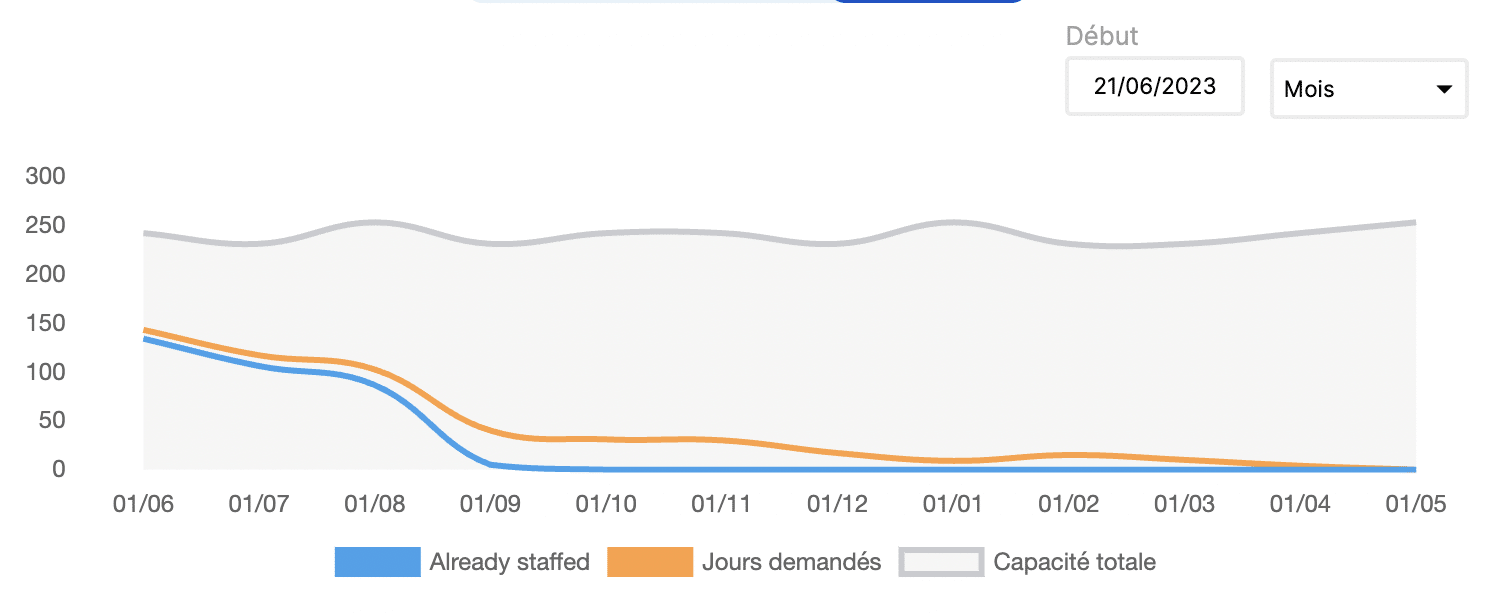
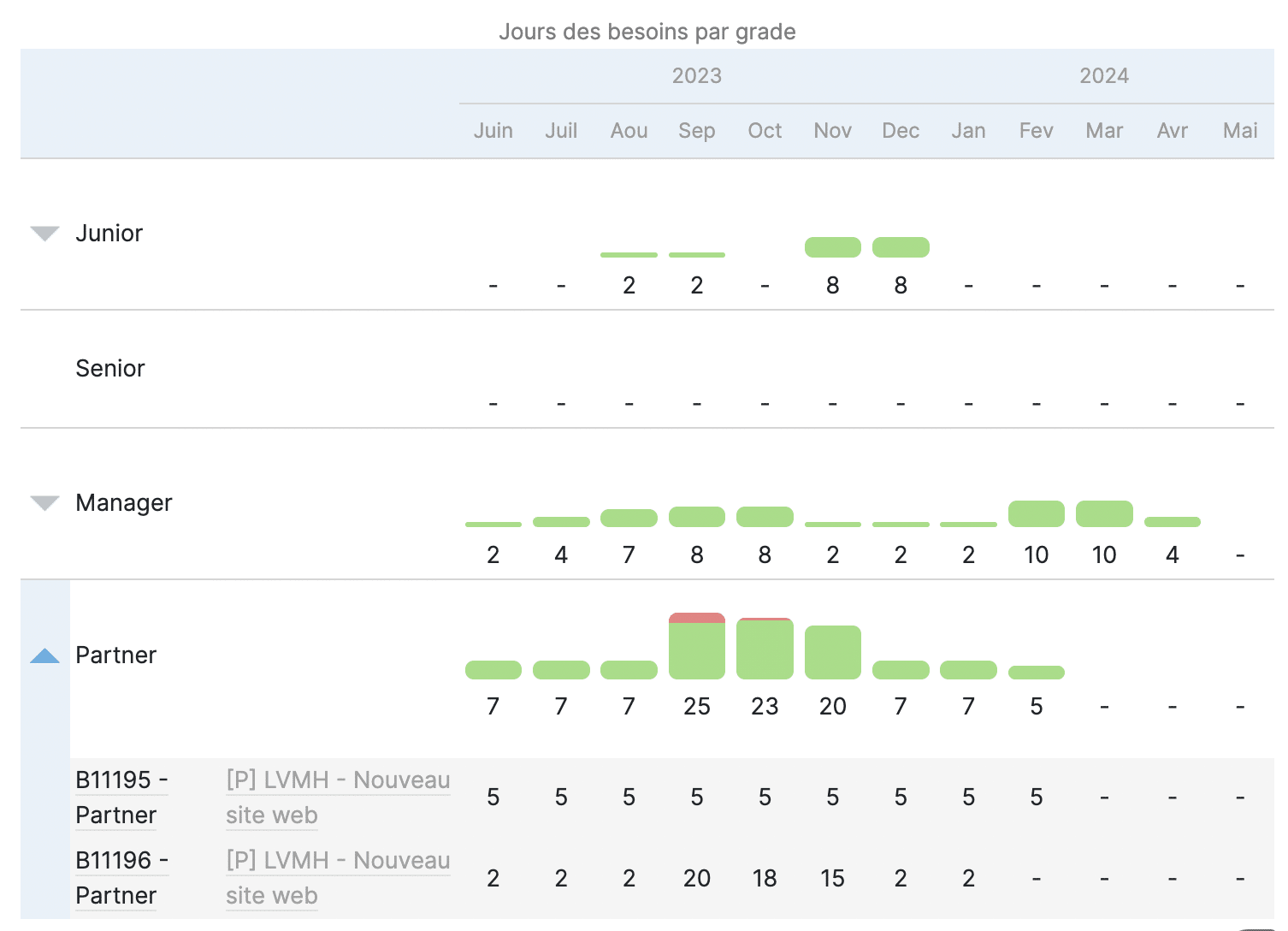
Improving financial monitoring and project performance
Visibility across the entire project portfolio makes it easy to see the status of all projects at a glance and identify those that are deviating from their budget or falling behind schedule. It's easier to identify the blockers and reasons that cause a project to underperform.
With the view of the entire portfolio, informed decisions can be made to restore a trajectory error.
For example, a project portfolio manager may choose to reallocate resources from a project that is showing a head start to a project that is struggling. Without a global view of the situation of the various projects in the portfolio, it is impossible to restore the situation, because there is a lack of information.
Project portfolio management identifies and assesses the potential risks associated with each project. This allows for appropriate risk management strategies to be put in place to minimize negative impacts and maximize the chances of success.
By proactively monitoring and managing risk, portfolio management helps to manage deadlines carefully, avoid budget overruns and project failure.
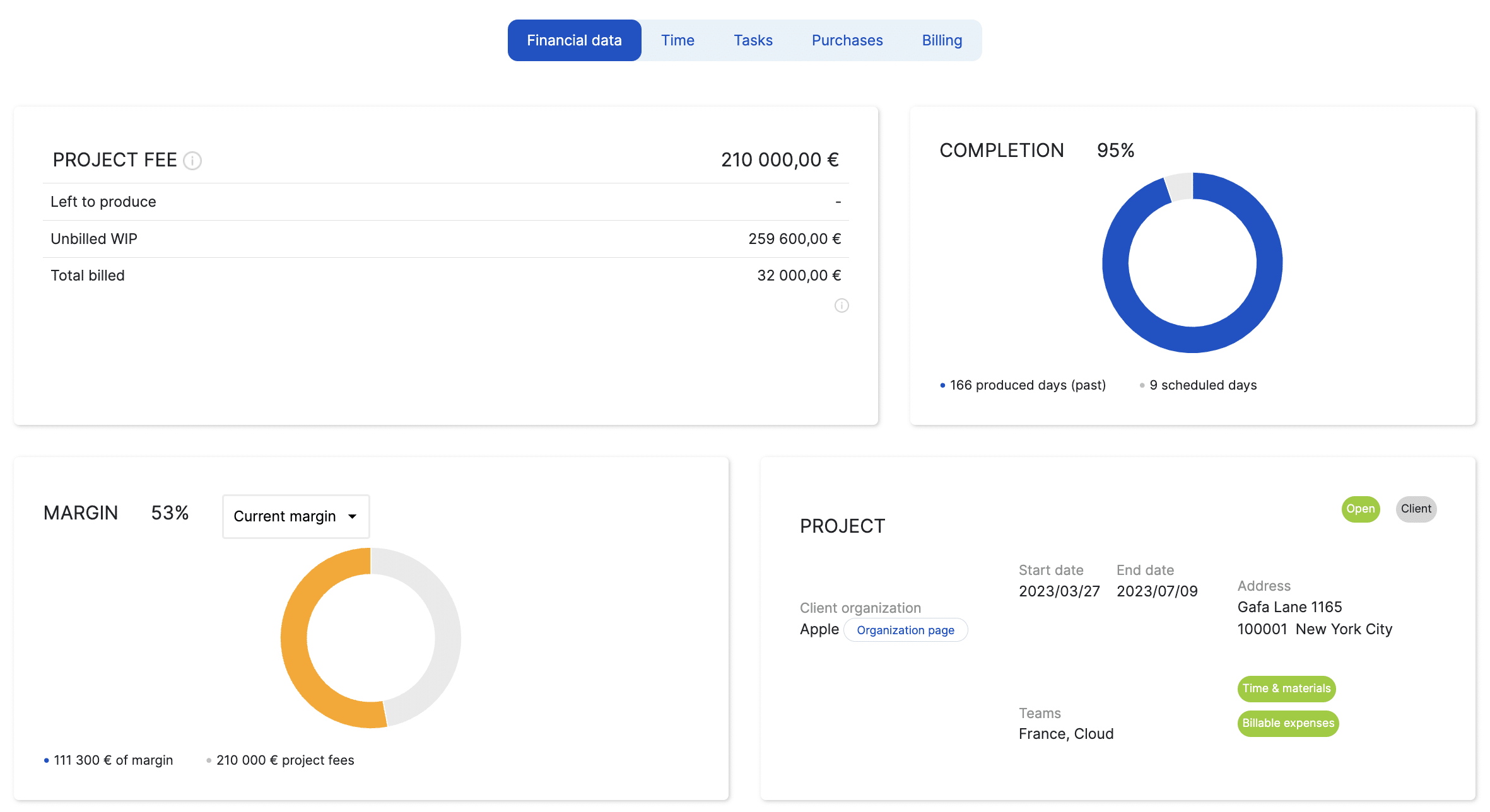
Project portfolio management provides key performance indicators to evaluate project progress and results.
This allows for the early identification of troubled projects and the ability to take corrective action to get them back on track.
Performance monitoring also facilitates organizational learning by identifying best practices and lessons learned to share across projects.
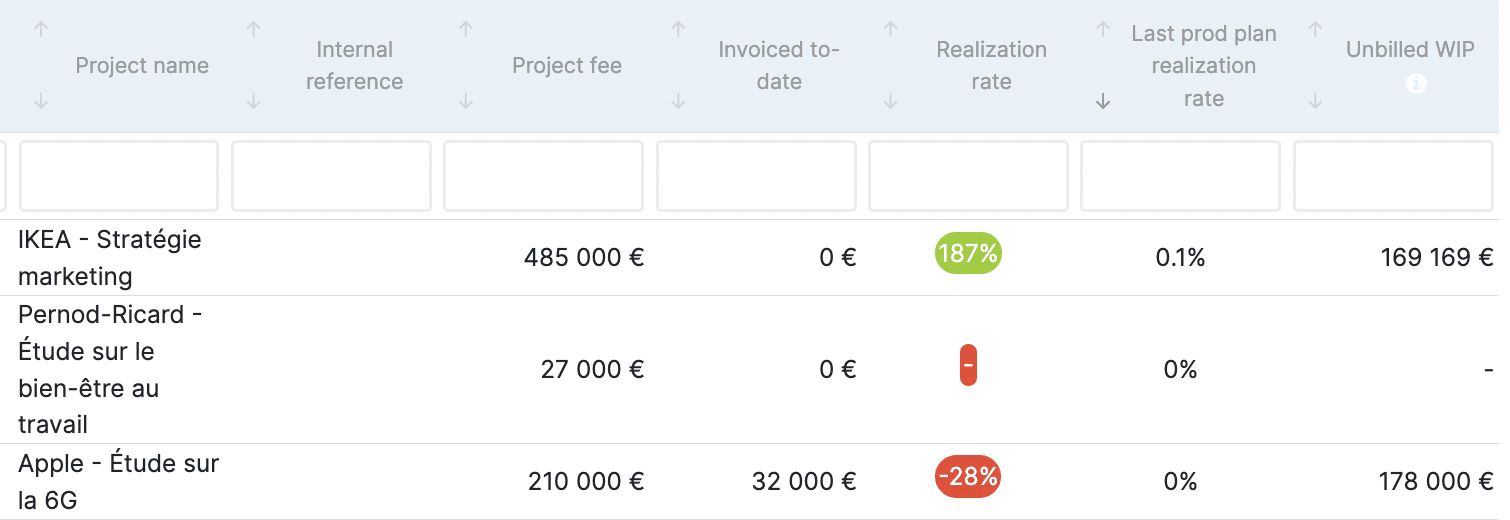
More strategic decision-making
Project portfolio management allows projects to be compared with each other using strategic criteria.
It provides tools and methodologies to assess the benefits, risks, costs and impacts of projects on strategic objectives.
These benchmarks help decision-makers prioritize projects and make informed decisions.
Anticipating opportunities and risks
Project portfolio management makes it possible to anticipate opportunities and risks related to the external environment.
It helps to identify trends, market needs, innovations, and potential threats that can influence the overall strategy of the company.
This information helps decision-makers adjust the project portfolio to seize strategic opportunities or to address emerging risks.
By pre-staffing your resources at the opportunity, you limit errors in planning future projects.
Reassessment and continuous adjustment
Project portfolio management promotes an iterative and adaptive approach to strategic decision-making.
It allows you to monitor project performance, business case and therefore evaluate results against strategic objectives and make adjustments if necessary.
This allows for dynamic and scalable decision-making based on changes in the environment and new information available.
How do you manage a portfolio of projects?
CIGREF's work has made it possible to identify a structural approach to project portfolio management in 9 main areas.
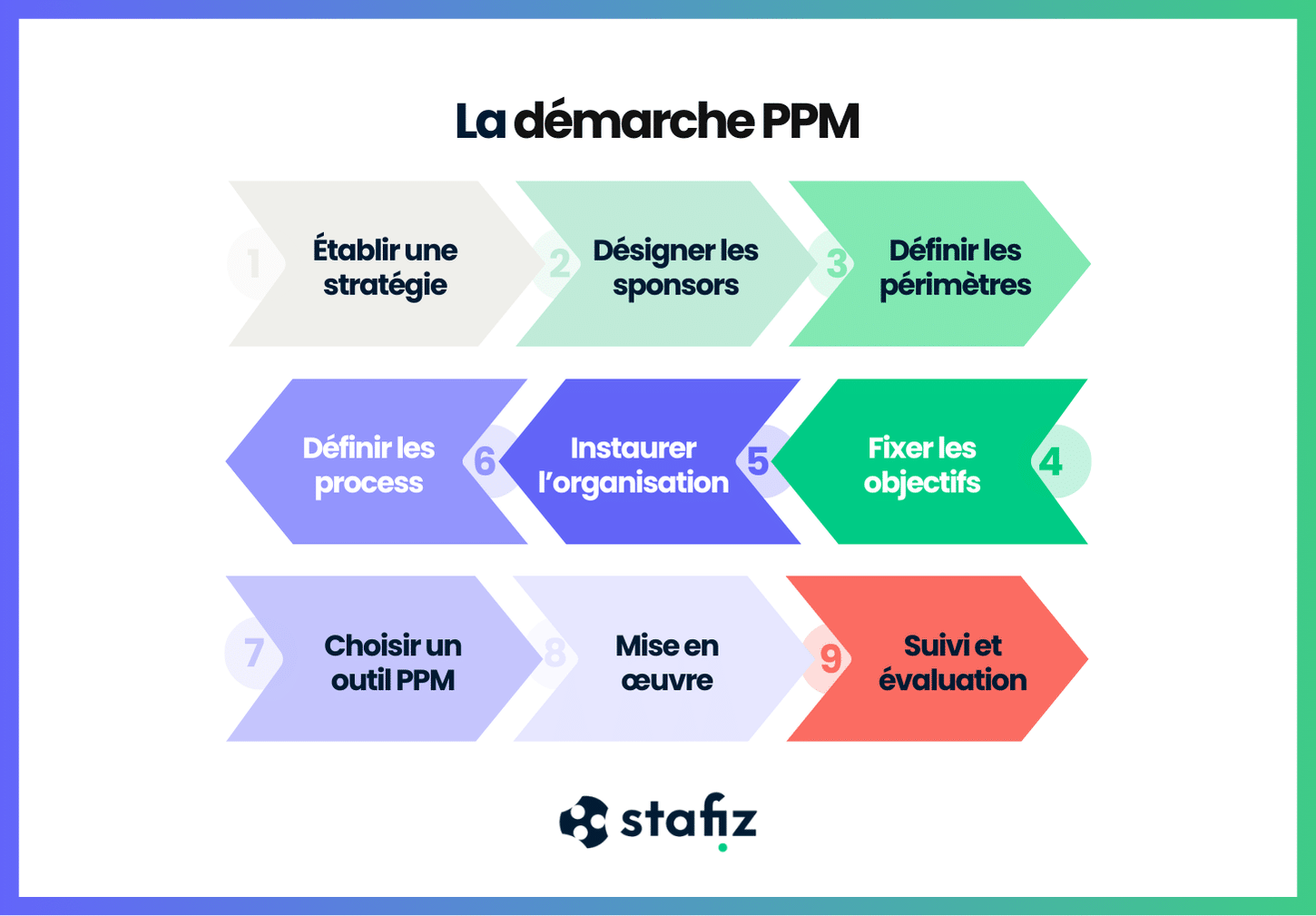
These 9 key axes allow you to develop an organizational strategy that is itself divided into 4 steps to facilitate your implementation.
Step 1: Select the projects
Project selection criteria
To determine which projects to include in the project portfolios to be managed, it is necessary to analyze and classify them according to several criteria.
- Strategic alignment: Projects should be consistent with the organization's strategic goals.
- Expected results: projects must have clear and measurable objectives. They must have enough impact for the organization.
- Feasibility: the technical, operational and economic feasibility of the project must be assessed in a POC.
- Return on investment: Projects should be evaluated based on their potential for profitability and value generation for the organization.
- Risks and other uncertainties : Projects should be categorized according to the associated risks and uncertainties.
The project evaluation method
The projects must then be evaluated to give them a score against each of the above criteria.
There are different methods of project evaluation that help make informed decisions about which projects to include in the portfolio. Here are some of the commonly used methods.
- Cost-Benefit Analysis (CBA): This method consists of comparing the expected costs of a project with the expected benefits. It quantifies the costs and benefits in financial terms and then calculates the cost-benefit ratio to determine the profitability of the project.
- Return on Investment (ROI) Analysis: ROI evaluates the expected financial return of a project by comparing the expected financial gains with the necessary investments. It is usually expressed as a percentage and allows projects to be prioritized according to their profitability potential.
- Multi-criteria evaluation method (MEC): This approach takes into account several criteria, such as financial return, strategic impact, technical feasibility, alignment with the organization's objectives, etc. Projects are assessed and scored against these criteria, and then benchmarking is conducted to identify priority projects.
- Sensitivity analysis: This method consists of evaluating the impact of variations in key parameters of a project, such as costs, revenues, deadlines, on the financial results. This helps to identify the projects that are most sensitive to change and assess their robustness.
It is important to note that there is no one-size-fits-all method that works for everyone. Choose to use a method or a combination of methods depending on your needs and the complexity of the projects.
Step 2: Prioritize your projects
Once the projects have been evaluated, you are able to assign them a scoring.
Scoreeach project based on predefined criteria such as strategic impact, feasibility, return on investment. Then, calculate an overall score for each project and use those scores to prioritize them.
We recommend that you consult with relevant stakeholders for their input and support when making decisions.
Step 3: Allocate your resources to the different projects
Value for money
To allocate resources correctly in the context of project portfolio management, it is necessary to seek to optimize their investments.
Resources should be allocated to projects based on the project situation and its priority level.
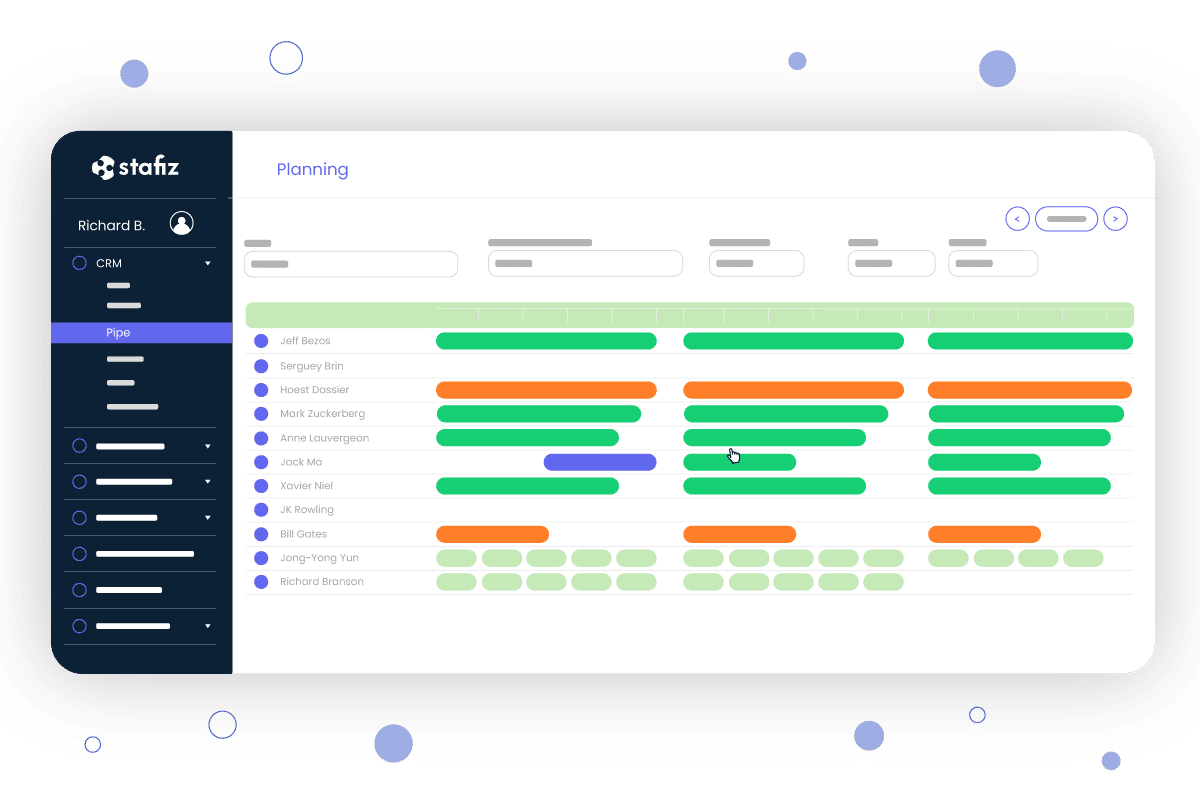
Learn how Stafiz makes resource allocation easy
Smart matching®, profile search by skills, experience, role or availability... Thanks to our algorithm, there is no need to chase after talent!
Behind the resource allocation choices, the manager seeks to obtain two results.
- Optimize resources to ensure that the load is aligned to the optimal level of capacity.The optimal level of capacity depends on each organization. In some companies, for example, the workload on employees should not be at maximum capacity, because some time must be set aside to work on other internal activities.
- Carry out arbitrations to obtain the expected results on the projects.If, for example, a project that is at the top of the priority list is falling behind schedule that may adversely impact its outcome, the project manager should look at how to recover resources from lower-priority projects to allocate them to that project and restore the situation
It is therefore necessary to constantly work on the re-allocation of resources and to challenge the status quo to improve the value for money.
Managing constraints and dependencies
To successfully manage the project portfolio, capacity planning must take into account a number of resource and project constraints.
- Availability constraints: The specific resources required for a project may be limited or unavailable at certain times. For example, specialized experts may not be available during certain periods of time or key equipment may be booked for other projects. It is essential to consider these availability constraints when allocating resources.
- Deadline constraints: Projects may have strict schedule constraints that require specific allocation of resources to meet deadlines. It is important to take these time constraints into account.
- Budget constraints: Available financial resources may be limited, and it is essential to respect budget constraints when allocating resources to projects. Adequate financial planning and good cost management is necessary to ensure efficient use of resources.
- Dependencies between projects: Some projects may have dependencies between them, which means that the completion or progress of a project depends on the availability of results or resources from other projects.
These constraints and dependencies must be anticipated for the work of optimizing resources to produce the best possible result.
Step 4: Track projects and their results
The project monitoring dashboard
To properly manage a portfolio of projects, it is necessary to have visibility into the performance of all the projects in the portfolio. This means being able to consolidate the dashboards of all projects.
The project dashboard is crucial for managing your project portfolio. It provides visibility on the situation, performance and profitability of projects. This project monitoring dashboard provides the following information.
- Progress tracking: it highlights the activities carried out, the tasks in progress and those to come. It provides a holistic view of the project's progress and allows for the early detection of deviations or delays.
- Project management indicators: the project dashboard provides key indicators to evaluate the performance of the project. This can include indicators such as on-time, cost, and quality compliance, stakeholder satisfaction, or resource utilization.
- Risk management: the dashboard can include information on the risks identified and their level of criticality. This allows risks to be monitored and proactive measures to be taken to mitigate their impact on the project.
Project Performance Indicators
There are many KPIs in a project , and it is important for each project portfolio manager to choose the most important metrics to stay aligned with their goals.
We must focus on indicators that have a real impact, and on which it is possible to act.
To measure a project, the main performance indicators are always present.
- Project progress: what is the percentage or value progress against the goal. This progress can be detailed by task or looked at as a whole.
- Time spent against the goal: Another performance metric is the ability to stay within the budgeted time goal on the project, in order to stay aligned with the goal.
- The project's margin in relation to the budget margin: when it is possible to calculate a budget margin (it must be sold and have a turnover), it is interesting to compare the recalculated margin of the project to the initially budgeted margin. The recalculated margin takes into account past and future costs on the project.
- The completion rate: it compares the sold value of the project with the value of the employees' time spent and future on the project. This provides another analysis of the project's performance and whether the project's pricing was properly carried out.
Project portfolio management is therefore an asset for all companies that work in project mode.
This approach helps bring more performance to projects by aligning project management with a company's strategic objectives.
It provides greater visibility to identify levers for improvement and optimizes resources to deliver better overall results.
To get started with effective project management, it is important to identify the right project portfolio management software.
The Stafiz software makes it possible to meet all the needs of project portfolio management.



